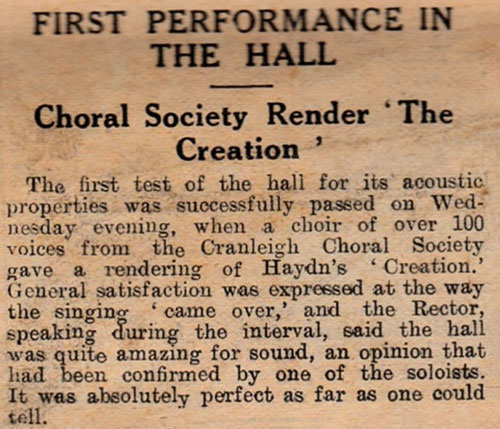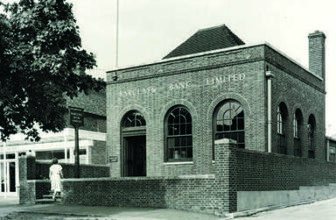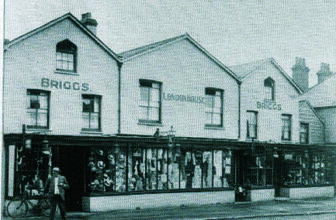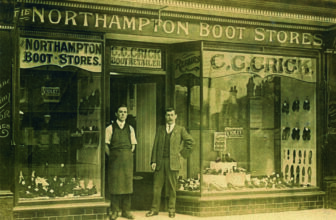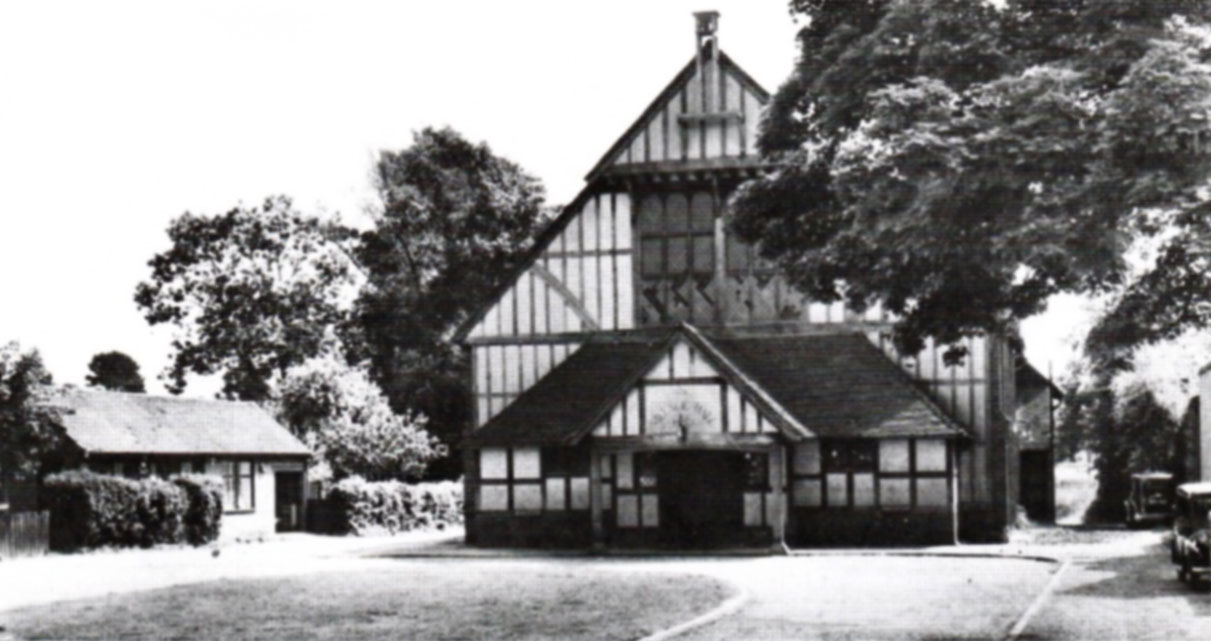
The Village Hall in the 1930s (courtesy of Michael Miller)
Cranleigh’s old Village Hall, built in 1891, was proving inadequate in size and facilities by the First World War. So it was decided to build a new one in memory of those who had died. There was a small surplus from the money raised for the war memorial to start the fund off. Then the estate of Frederick Greene of Rydinghurst donated the land for it, in a prime position in the High Street. Further cash, however, came in very slowly.
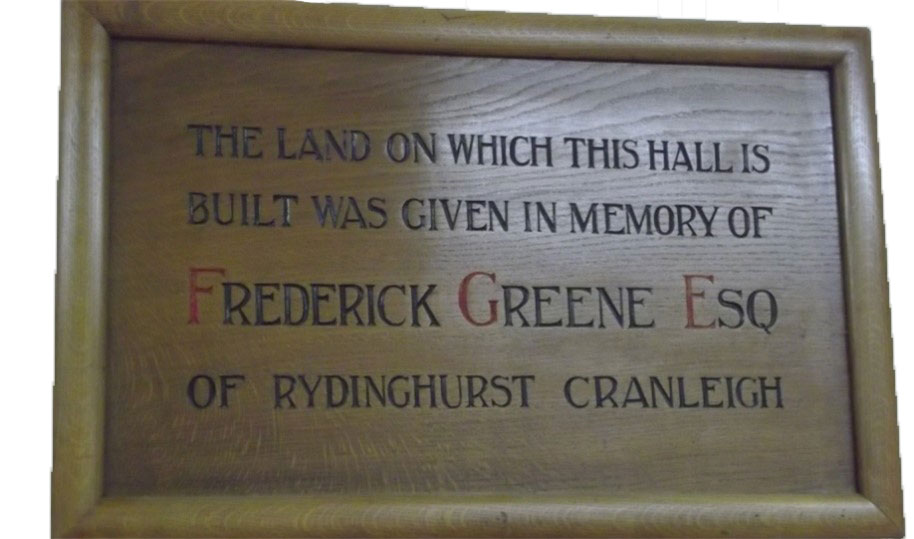
The land for the Hall was given in memory of Frederick Greene of Rydinghurst
In the late 1920s it was decided to have a final concerted effort to raise the sum needed.
A special Cranleigh Carnival was held on Whit Monday 1930 in aid of the fund.
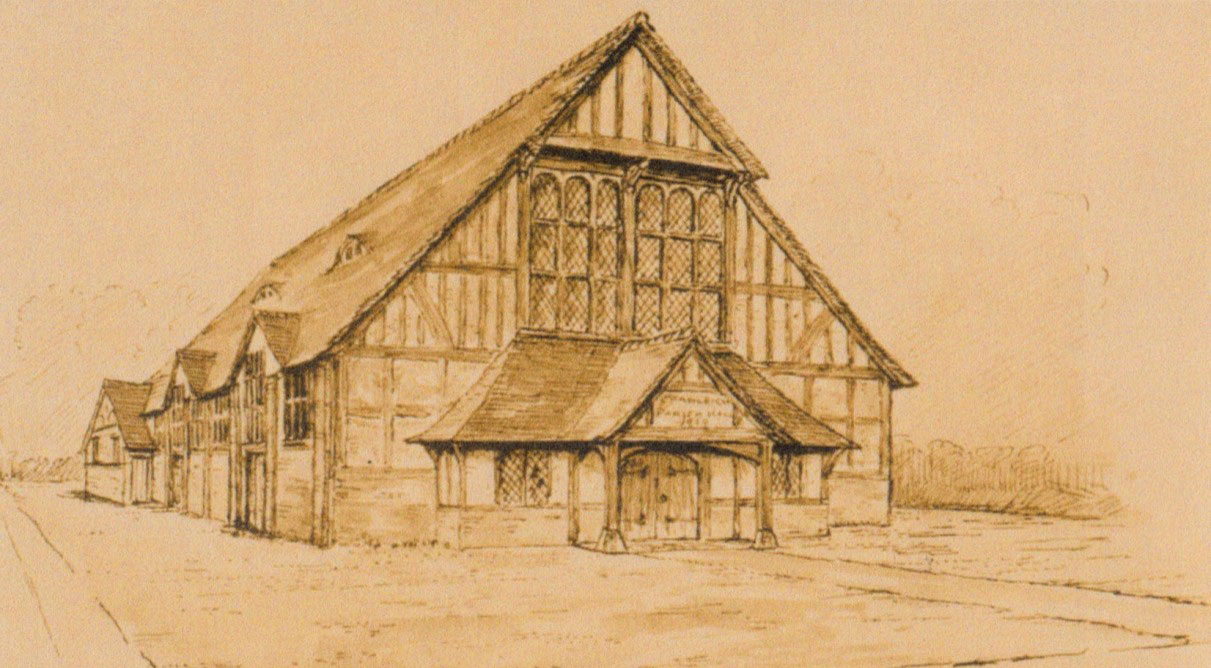
Thomas Wade’s design for the new Village Hall (Cranleigh History Society, Nigel Nicholson Papers)
The most exciting feature of the Carnival was a Pushball competition, sponsored by the Daily Mail. Pushball was invented in the United States in 1891 and was in vogue for about 50 years, especially for inter-college sport. It fell out of fashion around 1955 because it had become increasingly rough. Two teams of eight played with a ball that was 6ft (1.8m) in diameter, and weighed 50lb (23kg). There were two goals, and the object was to push the ball under the goal (5 points) or over it (8 points). Perhaps it is due for a revival?
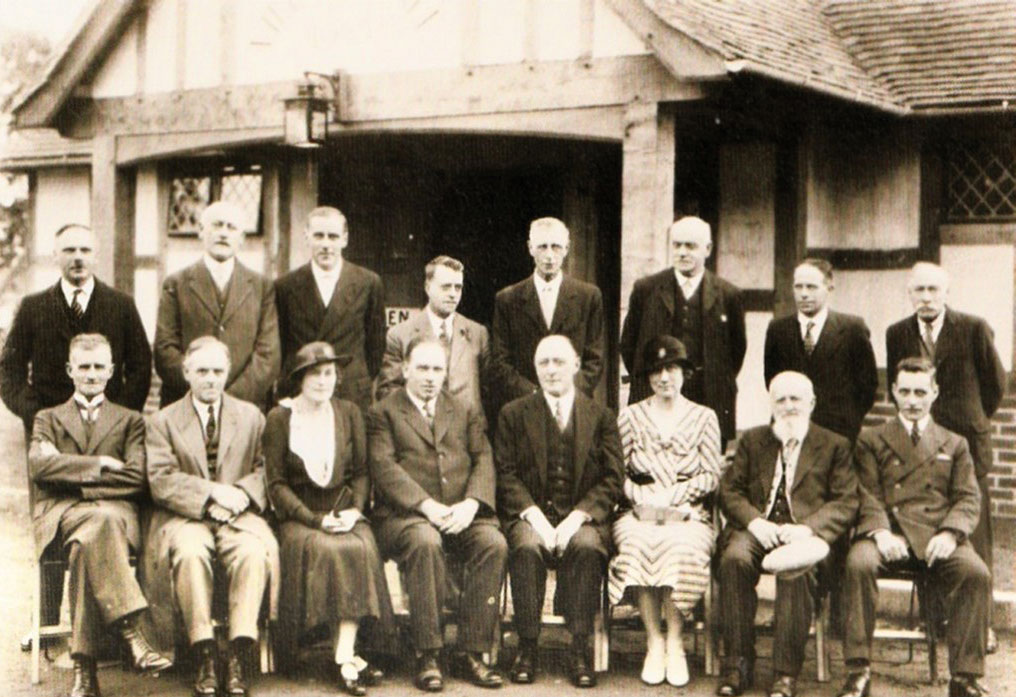
The great and the good on Opening Day: Thomas Wade is 2nd from the left in the front row (courtesy of Michael Miller)
In 1932, the parish council decided, largely because it would help local unemployment, that enough money had been raised for building to start. A design competition was won by the local architect, Thomas Wade. Cranleigh already owed him an enormous debt for shops like the present Bramley Linen Care, Rawling’s, Barnardo’s and Eaton’s Goldsmiths, and numerous fine houses, such as Baltic House, Robin Rag and Briarfield on the Common, The Old Pound in Horsham Road, and Little Causey, near the Arts Centre. The building firm of Auchterlonie & Reeves, then in Ewhurst Road, was given the contract, and used local labour, working with good old Cranleigh oak. The building cost around £4,000.
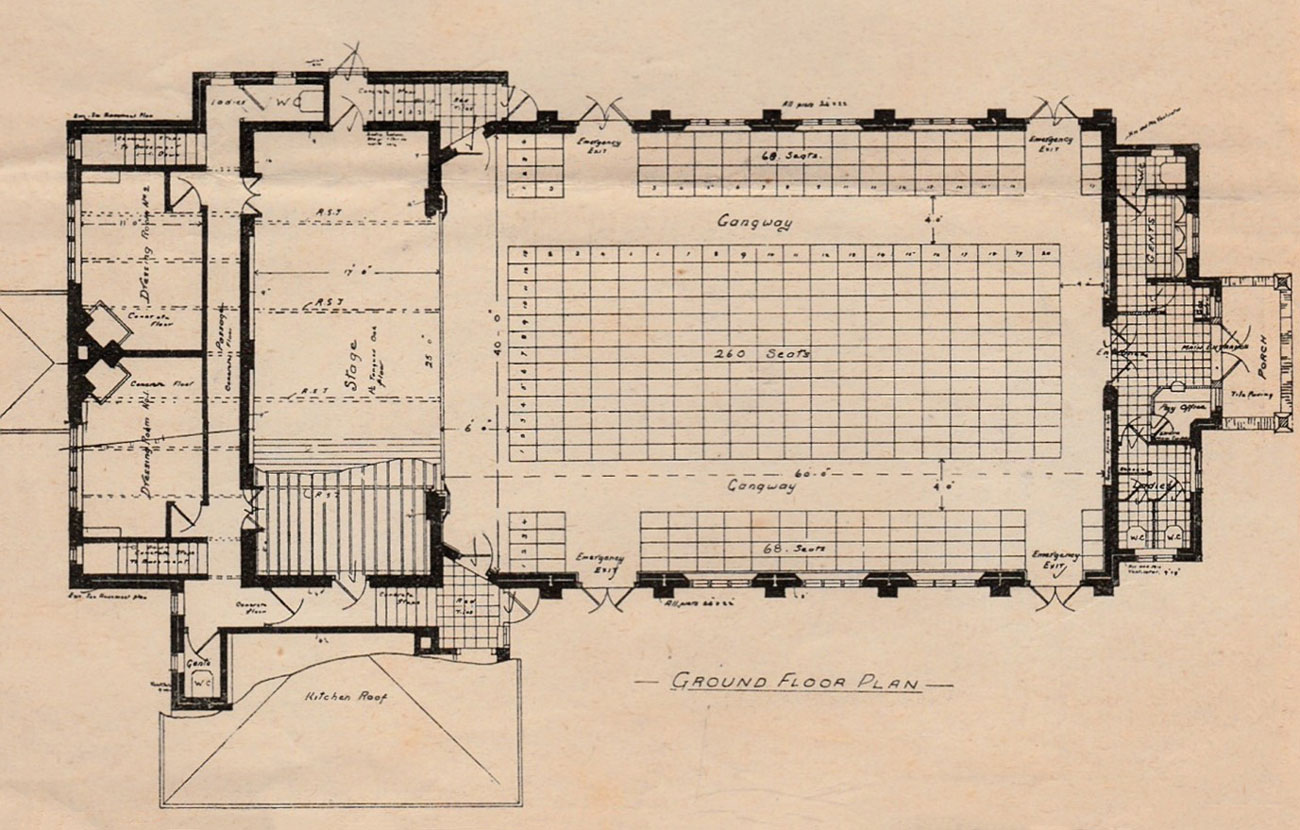
Thomas Wade’s plans for the new Village Hall, published in The Builder, Sept. 1st 1933
The long-awaited Village Hall had its opening ceremony on Wednesday afternoon, May 3rd 1933. On a Wednesday? Strange though it seems nowadays, Wednesday was early closing day, when the shops were closed in the afternoon, and so was the favoured day, rather than Saturday, for Village outings to the seaside, cricket matches, the annual Horticultural Society Show, the Rectory Fête and so on.
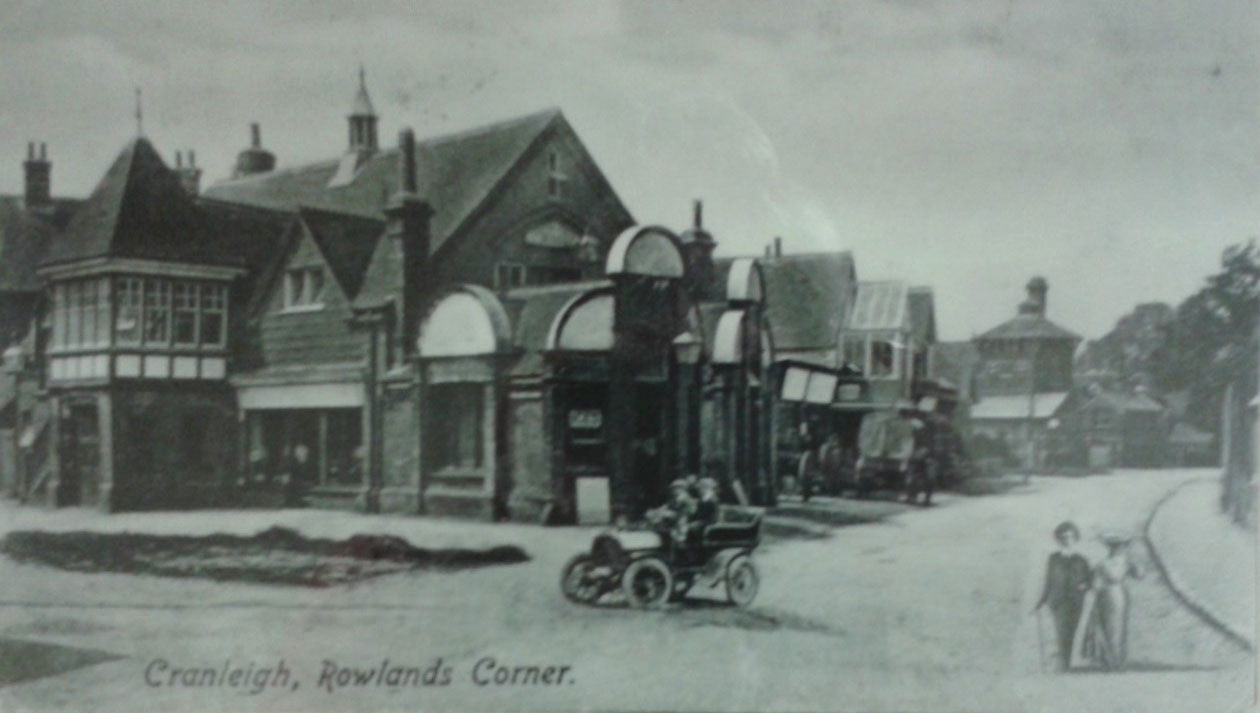
Cranleigh’s old Village Hall in the early 20th century
Sir Eric Bonham of Knowle was chairman for the afternoon, and most of Cranleigh’s dignitaries were present. The 400 seats in the Hall were occupied by residents. There were at least eight speeches by the dignitaries, in which the story of the fund-raising was recounted, and everyone possible was congratulated and thanked. Then Sir Gerald Chadwyck-Healey, formerly of Wyphurst (now St Joseph’s Special School), declared the Hall open.
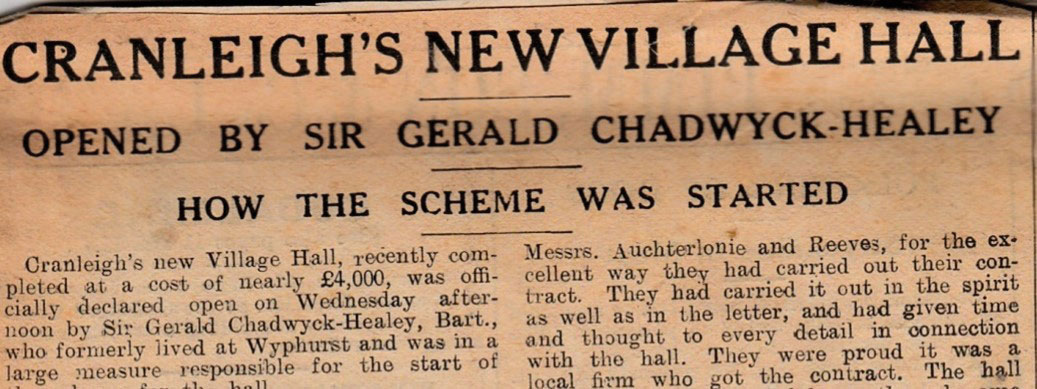
From the Surrey Advertiser
The same evening, the Cranleigh Choral Society, with over 100 members, gave a performance of Haydn’s Creation, with an orchestra of local musicians, under the baton of Samuel Mann, its regular conductor. The Hall’s acoustics were generally agreed to be excellent.
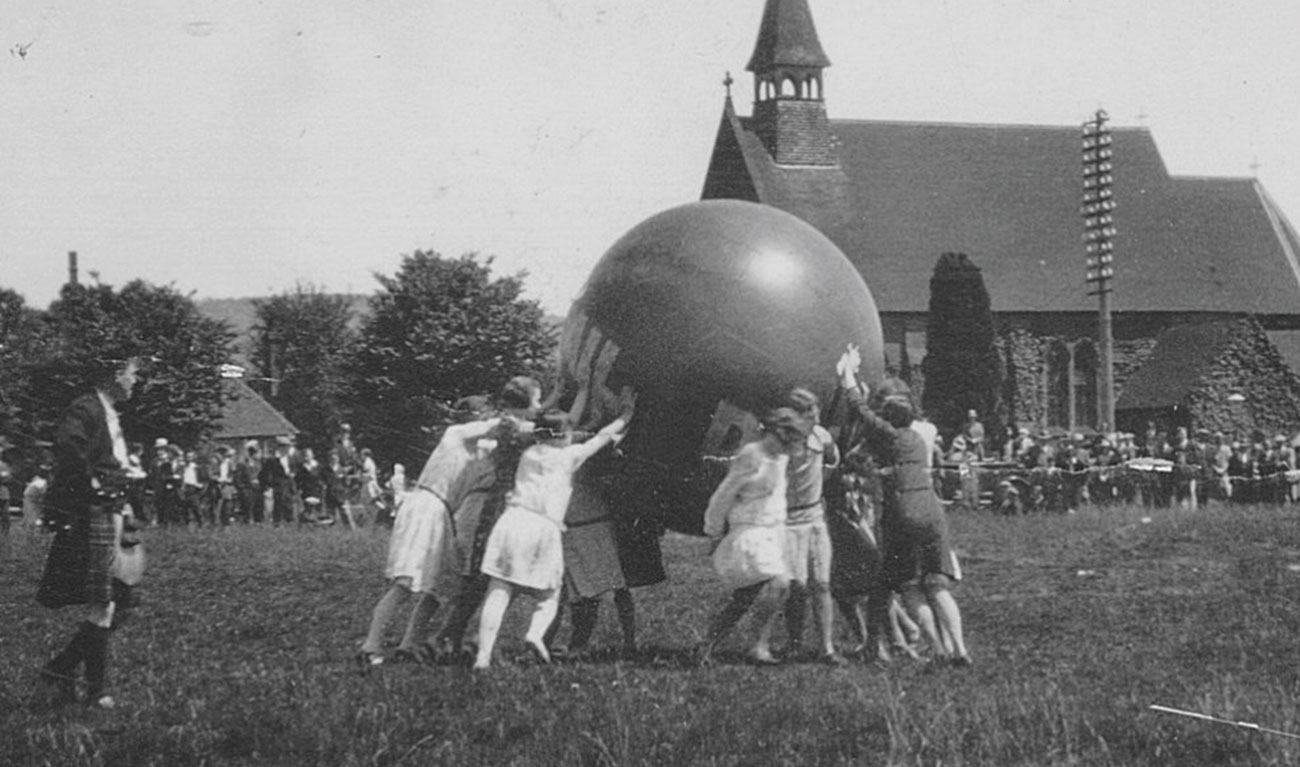
Pushball at the 1930 Carnival, fund-raising for the Village Hall (photo from the Daily Mail, courtesy of Mike Rackley). The former St Andrew’s church is in the background.
The next day, Thursday, saw 164 people assembled in the Hall for a whist drive. On Friday, tickets for a dance were sold out. ‘Reeves’ band played, assisted by a radio-gramophone.’ The Hall was quickly proving its value.

Cranleigh Women’s Institute’s fund-raising event, advertised in the Surrey Advertiser
Since then, the Hall has been used for numerous dances; as the reception point for evacuees during the Second World War; when necessary, for school classes, and school dinners; for plays by the Cranleigh Players; for the Coronation play by schoolchildren in 1953; for Darby and Joan Society meetings; for ‘Welcome to Cranleigh’ meetings for newcomers in the 1960s; for concerts; for exhibitions by the Arts & Craft Society; for parish council meetings; for the indoor market; for the U3A signing-in day; for Yoga classes, and now for vaccination against Covid19. The Hall was planned on a generous scale, and is still valuable, even though Cranleigh now has three or more times the population it had in 1933.
Well done, Thomas Wade, for a sturdy, adaptable and beautiful building!
The Cranleigh History Society plans to resume its monthly meetings as soon as the Covid regulations permit.

